Plants need light to grow. But not all sunlight that reaches the Earth’s surface is vital to plant growth. In fact, the light needed for healthy plant growth only makes up a small portion of the electromagnetic spectrum – which is visible light.
In this post, I’ll explain exactly what visible light is and go for a deep dive into light science and everything you need to know about full-spectrum light for plants.
With this guide, you should be able to confidently shop for LED grow lights for your indoor space.
What is the visible light spectrum?
Because of the nuclear fusion that the sun is constantly undergoing, electromagnetic radiation waves are cast out into space, eventually making their way here to Earth. Electromagnetic radiation comprises lots of different energy types, including radio waves, microwaves, infrared radiation, ultraviolet light, x-rays, gamma rays, and – of most interest to us indoor gardeners – visible light.
Within the visible light spectrum falls the light that you and I see with our eyes every day. The color of visible light varies in wavelength and is therefore seen in variations of green, yellow, and blue and red light.
When the full spectrum of visible light combines, we see it as white light. It is not until visible light wavelengths are separated that we can see them as different colors. Think back to Isaac Newton’s famous experiment where he demonstrated this with a pair of prisms – one separating visible light into separate colored wavelengths and the other prism returning it to its combined form, white light. Similarly, water droplets in the Earth’s atmosphere also have the same effect on white light as did Newton’s prisms. The white light that enters water droplets suspended in the air breaks apart and, if viewed from the right angle, is seen in the sky as a rainbow.
Although visible light makes up only a small portion of the total electromagnetic radiation that arrives here on Earth, it is within this range of light that facilitates photosynthesis. Besides visible light, plants also use tiny amounts of ultraviolet light and infrared radiation.
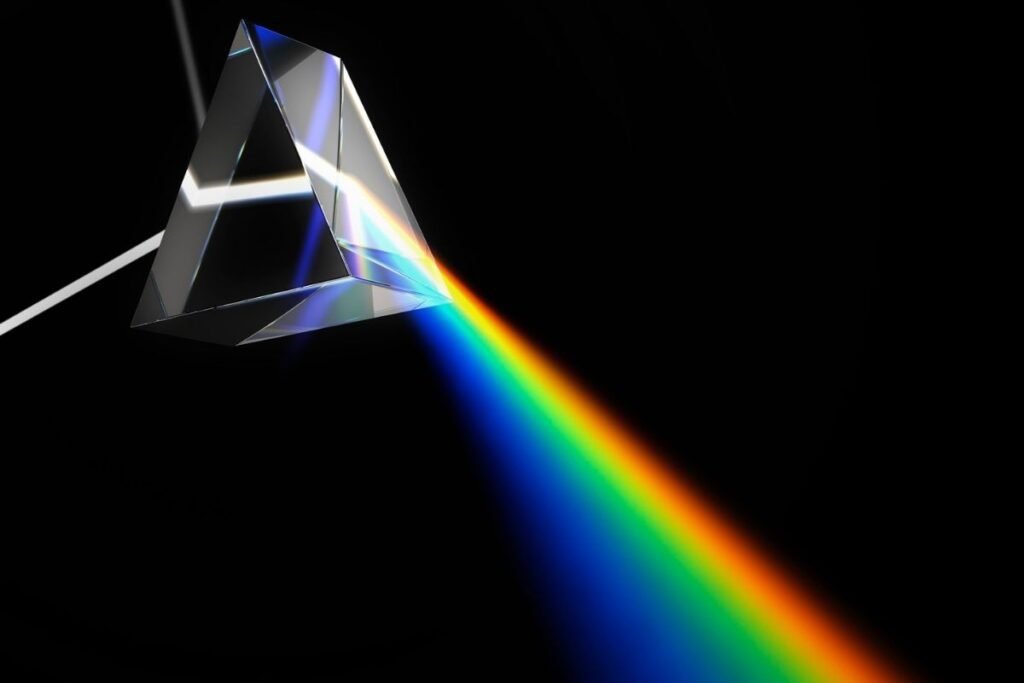
How does light affect plant growth?
Light affects plant growth in a few vital ways. In particular, there are three main kinds of energy that help a plant reach optimal health – visible light, ultraviolet light, and infrared radiation. Here’s a quick breakdown of these types of energy and how each affects the growth rate and health of houseplants.
Visible light
For sufficient rates of photosynthesis and chlorophyll concentration, plants require a visible spectrum of light ranging from between 380 to 700 nanometers – we humans see light that is 400nm as violet and light that is 700nm as red. In the plant science and horticulture world, we sometimes refer to this spectral range as photosynthetically active radiation – or PAR for short.
The light that falls within this spectral range affects plant growth differently. Plants use violet and blue light waves, between 400 to 490nm, for vegetative growth. While red light, which falls within narrow spectrum between 580 to 700nm, is used by plants for reproductive growth.
But, what about the 90 odd nanometers in between 490 and 580? Well, in between this spectral range falls green light – something plants don’t use a lot of. Sure, some green light is used for “plant architecture“, the arrangement of branches, leaves, and flower organs, but most green light isn’t absorbed by plants. That’s why our eyes see most plants as green. Plants absorb the violet-blue light and the orange-red light and reflect most of the green light that they receive.
Pretty neat, huh?!
Ultraviolet light
Plants also use small amounts of ultraviolet light (UV). There are three different types of ultraviolet light broken down by their respective wavelength:
- UV-A radiation: 315 to 400nm – in regulated administrations UV-A can help plants to produce robust plant growth.
- UV-B radiation: 280 to 315nm – in small amounts UV-B prevents fungal infections from attacking and spreading on an indoor plant. Although UV-B radiation plant exposure should be limited to short periods, as it can alter plant DNA and inhibit a plant’s ability to photosynthesize.
UV-C radiation: 100 to 280nm – UV-C is harmful to plants. Thankfully, the Earth’s ozone layer stops UV-C radiation from entering the atmosphere, so the likelihood a grow light manufacturer would purposefully make a light that produces UV-C is extremely unlikely.
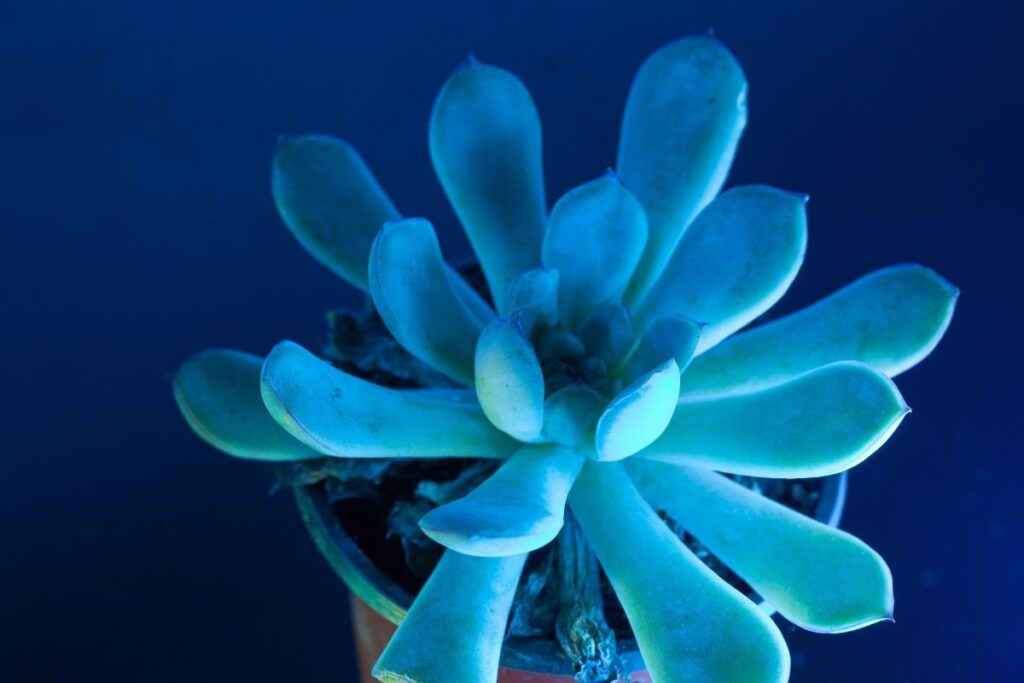
Infrared radiation
So, does infrared light affect plant growth? Although infrared radiation (IR) isn’t necessary for photosynthesis, it produces heat that is used by plants in two different ways:
- Infrared radiation increases plant growth: Out in the real world, unregulated by indoor growers, plants are constantly competing for natural sunlight. As the competition heats up, plants cover one another as their race to the sun causes them to grow taller and spread out further. Subsequently, covered plants will receive more filtered light. The filtered light that the covered plant receives contains high levels of infrared light. This signals to a plant that it needs to grow at a faster rate and reposition itself in a spot where it is once again receiving optimal amounts of sunlight – a phenomenon that results in a rapid spurt of growth.
- Infrared radiation promotes blooming: IR stimulates the growth of phytochromes, a photoreceptor that regulates plant development, leaf distribution, stem growth, and reproductive growth. Because the days in the summer are longer, more infrared light is delivered to outdoor plants. Therefore, under grow lights, houseplants are stimulated by IR and grow reproductively no matter what season it is, just as they would outside during the warm spring and summer months.
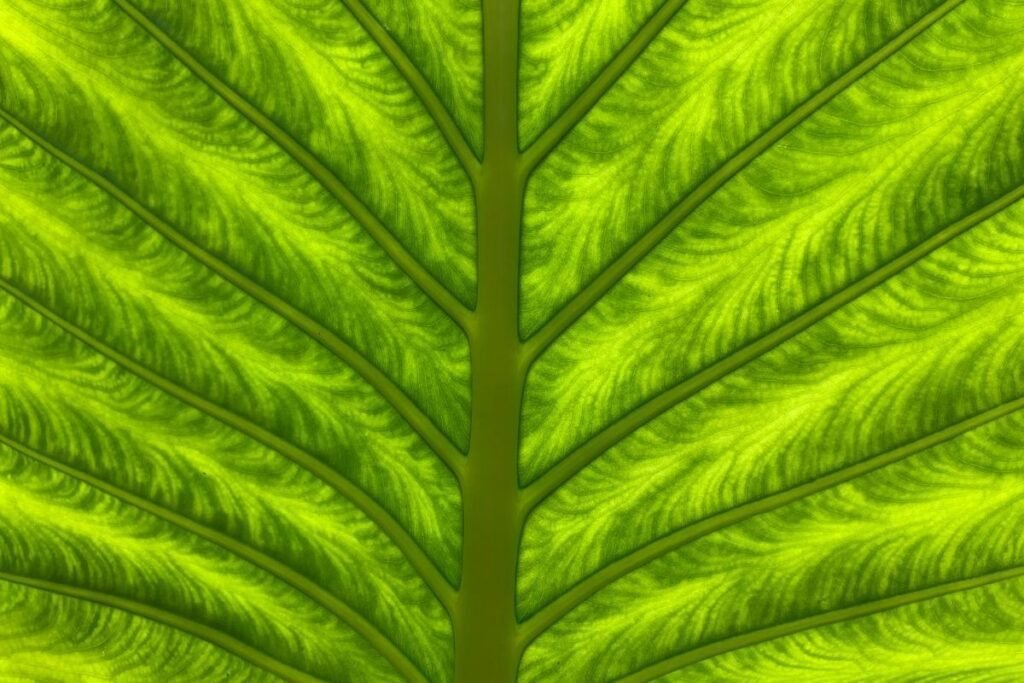
Best light spectrum for vegetative growth
So, what is the best color spectrum for vegetative growth? As I quickly touched on above, blue light for plants, between 400 and 490nm, is the perfect spectral range for vegetative growth.
If you’ve had your eye on a fluorescent grow light, you may have noticed that these types of lights often use a measurement of Kelvin rather than nanometers. Kelvin (K) is a measure of temperature or, in the context of plant growth, a measurement of color temperature.
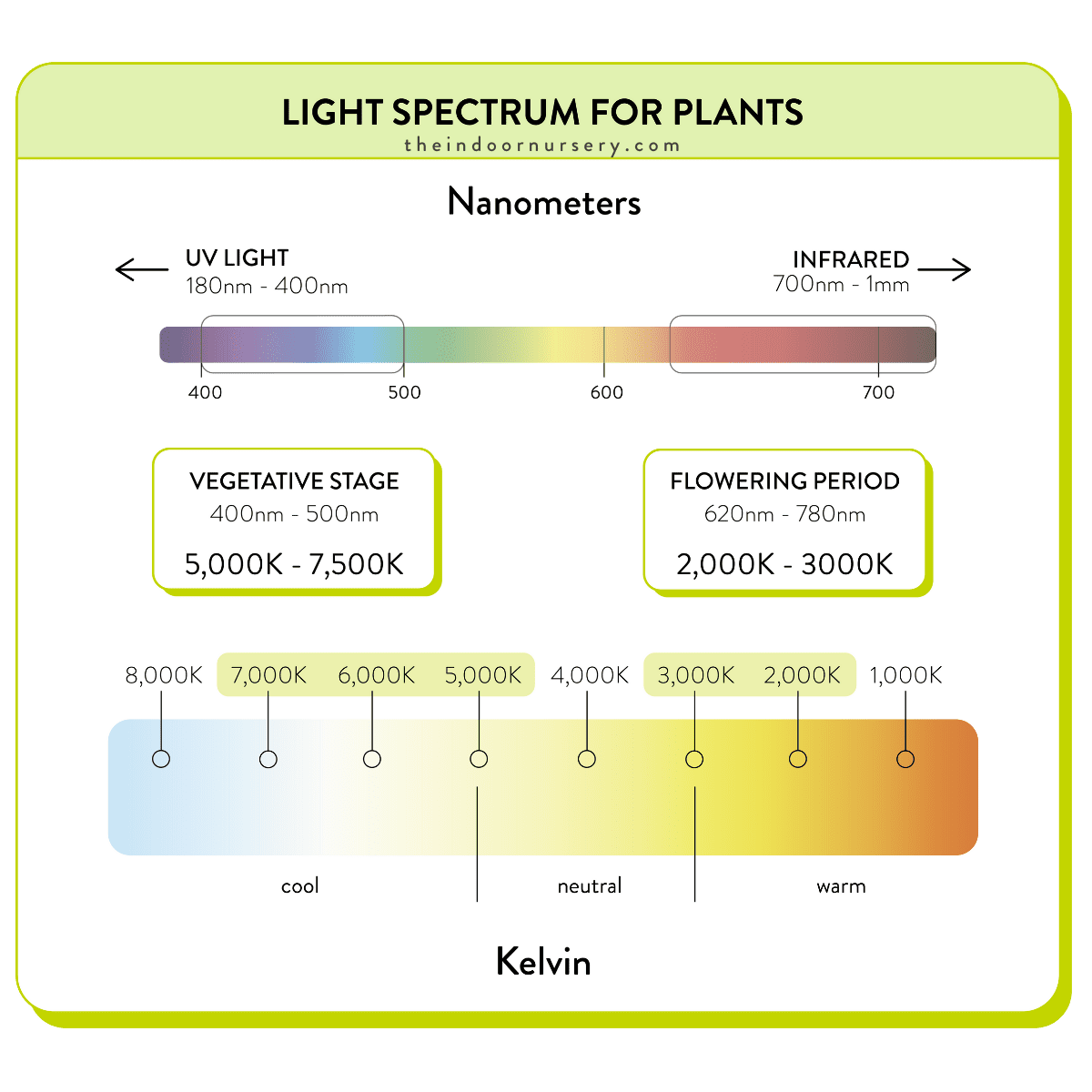
Kelvin is measured on a scale of 1 to 10,000.
To put this into perspective, 1,000K gives off a warm/red color and 10,000K gives off a cool/blue color. With that in mind, you’ll want to find yourself a setup that delivers around 5,000 to 7,500 Kelvin for vegetative growth.
Best light spectrum for flowering plants
Red light, between 610 to 700nm or 2,000 to 3,000K, is the best for flowering and fruit production. Within this spectral range, artificial light produced by grow lights emulates the lighting conditions that are common during the spring and summer months – when plants flower and fruit.
Best full-spectrum light for plants
There are grow lights out there that will deliver both red and blue light simultaneously, this is referred to as full-spectrum lighting. When a manufacturer refers to full spectrum grow lights what they mean is their product has an integrated feature that allows growers to switch in between vegetative and reproductive modes or deliver both at once.
The main advantage of full spectrum grow lights is that growers will not have to switch out bulbs or bring in different grow lights for the different stages of plant growth – something growers that use HPS (high-pressure sodium) lights like a metal halide or HID light will have to do.
An LED plant light usually makes the best full spectrum grow lights. A full-spectrum LED light not only produces full-spectrum light, but a high-quality model will also produce small amounts of ultraviolet light.
See which LED grow lights we recommend here: 10 best LED grow lights for indoor plants
Best light spectrum for aquarium plants
As with most terrestrially based plants, aquarium plants also enjoy full-spectrum grow lights that produce artificial lighting that falls within both the red and blue spectral range. Therefore, full-spectrum lighting that produces blue, green, yellow, and red light, ranging from 400 to 700nm, is best used for aquarium plants.
FAQ
How many hours of light do indoor plants need?
Technically, under artificial lighting, growers can expose plants to 24/7 light regimes. Although, as a general rule of thumb, most plants enjoy a light regime that starts at 12 hours per day – great for vegetative growth. And then shifts to a regime of 16 hours of light a day – perfect for reproductive growth.
What spectrum of light for overwintering plants?
If you wish to overwinter your plants and keep them in a vegetative stage, a traditional fluorescent, halogen, or incandescent light with an adequate wattage output can get plants through the winter period. Although for best results, growers should aim for a full spectrum light that can be adjusted to produce more blue light than red light.
That way, a grower’s plants will stay in an unreproductive state. Then, as outdoor conditions warm-up, the plant can once again either go outside. Or for houseplants, the lighting regime can return to a reproductive mode, high in red light, to stimulate reproductive growth.
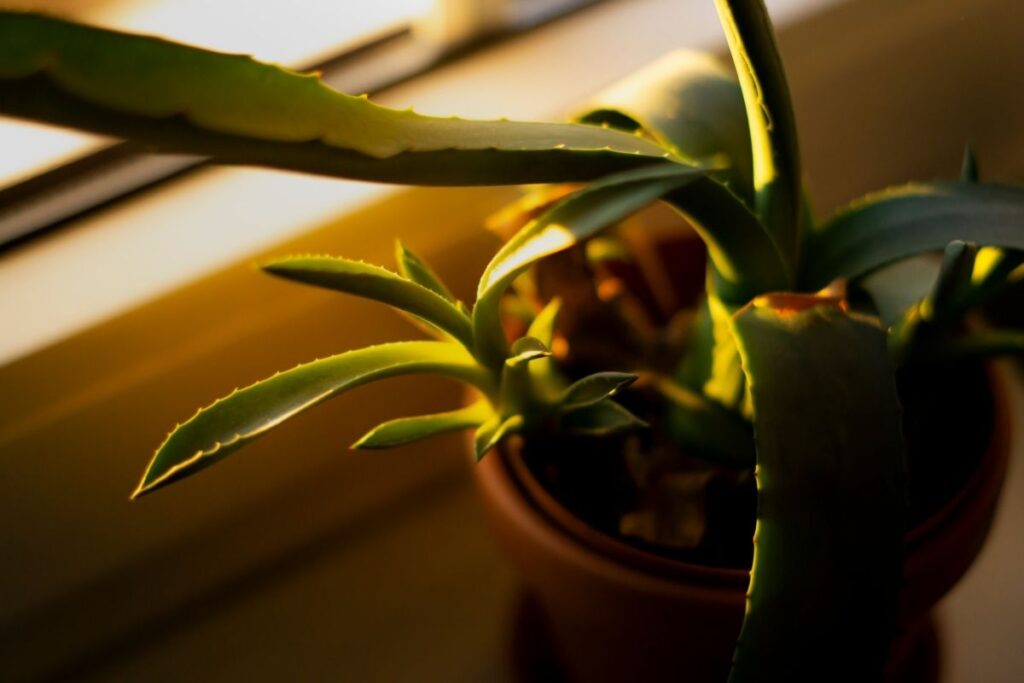
What instrument measures light spectrum for plants?
Some resources may suggest using a lux or lumen meter to measure the light spectrum for plants. The problem is, lux and lumen meters only measure light intensity. If you wish to get an accurate measurement of the actual usable light that is available to a plant for photosynthesis, a PAR meter is your best bet.
PAR meters provide an accurate measure of photosynthetically active radiation flux in wavelengths. This will help indoor growers determine exactly what wavelengths their indoor plants are receiving – whether that is full-spectrum light or light that is skewed towards the red or blue end of the spectral range.
How many watts of full-spectrum light is needed for plants?
How many watts of full-spectrum light is needed to grow healthy plants depends on the type of light and the variety of plants you are planning to grow. As a general rule of thumb, between 32-50 watts of artificial light per square foot should be sufficient.
The problem is, the wattage of a grow light doesn’t determine the quality or intensity of light that a grow light is emitting. A better measurement for this is Photosynthetic Photon Flux Density (PPFD). PPFD determines the number of photosynthetically active photons that a plant receives each second.
Final thoughts
If you are planning to grow houseplants under grow lights, be aware that many indoor grow lights aren’t adequately manufactured to provide your houseplants with a sufficient amount of usable light.
So, when you’re out hunting for your next full spectrum light for plants, be sure to keep the tips and tricks that I’ve shared within this post in mind. That way, you won’t feel disappointed with your final decision and your houseplants will continue to stay healthy and happy for many seasons to come.
Happy indoor gardening!
More about lighting
- How To Use Grow Lights For Indoor Plants
- 5 Best Grow Light Strips For Indoor Plants
- Our *hands on* MARS HYDRO TSW 2000 review (with photos)
- Understanding weed light cycles: Get the most from your harvest
- Indoor plant lighting guide: where to put your plants
- How close should grow lights be to plants?
- Best grow lights for seedlings: how to sprout your seedlings safely
- Guide: full-spectrum light for plants (+grow light spectrum chart)
- 10 best LED grow lights for indoor plants

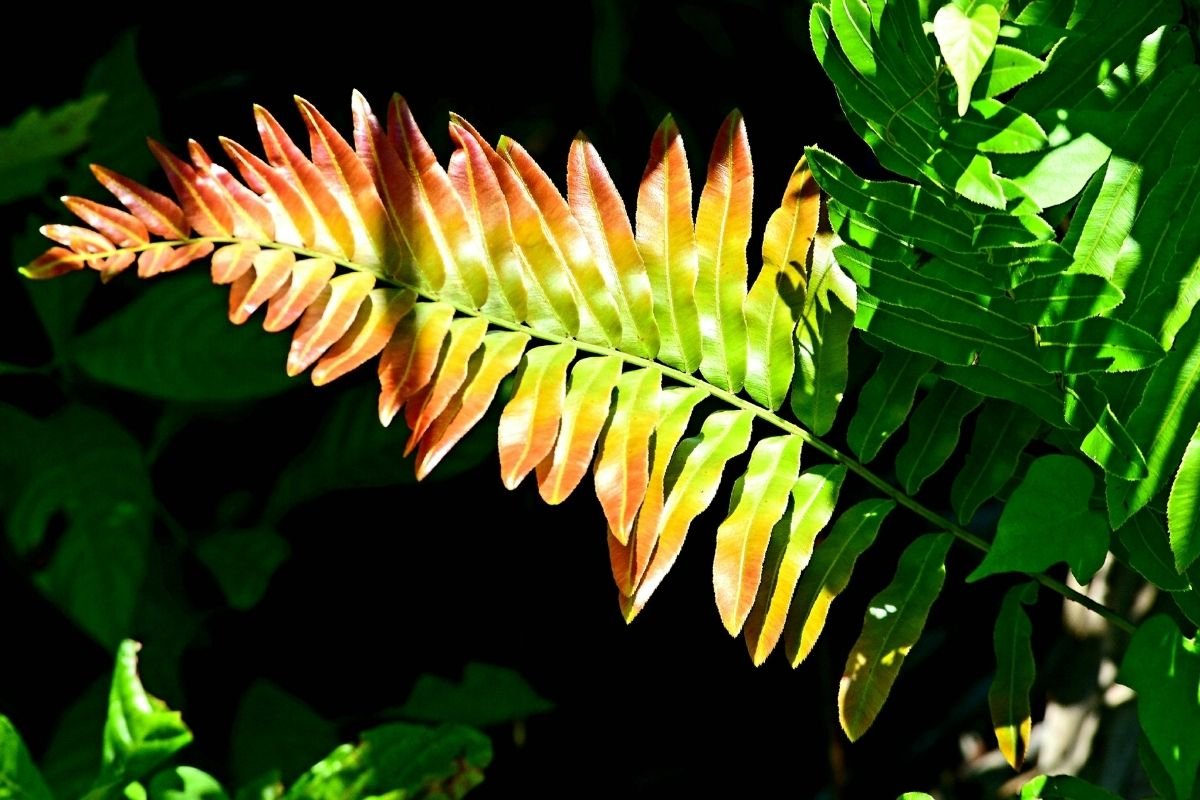
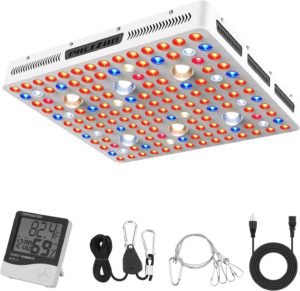
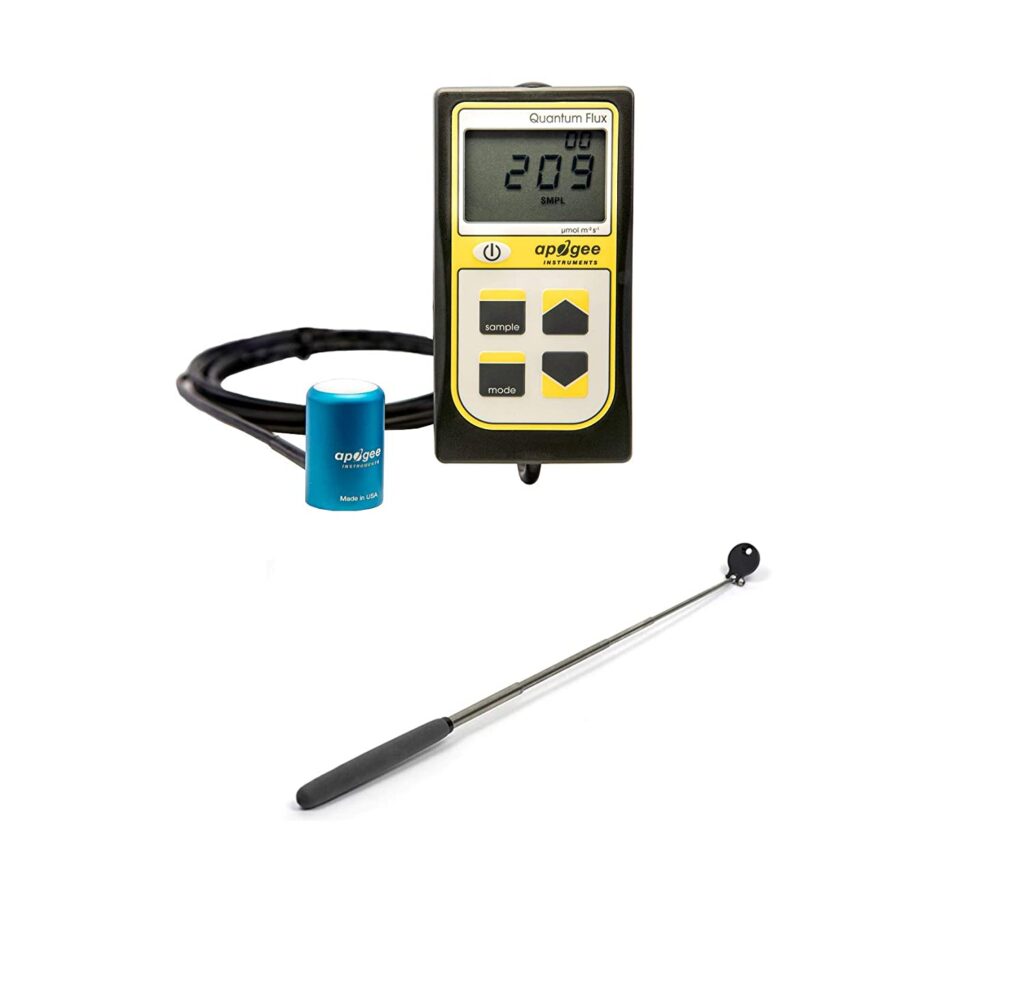
Brody, congratulations for this very well written explanation of how plants reacts to the various wavelengths of lights without reading like a 10 page science publication, but still manage to introduce the science aspect. Cheers.
Hey, Dan. Writing content can be a low-feedback kinda world, so I really appreciate your kind words. I’m super glad you found the content helpful. Thanks!